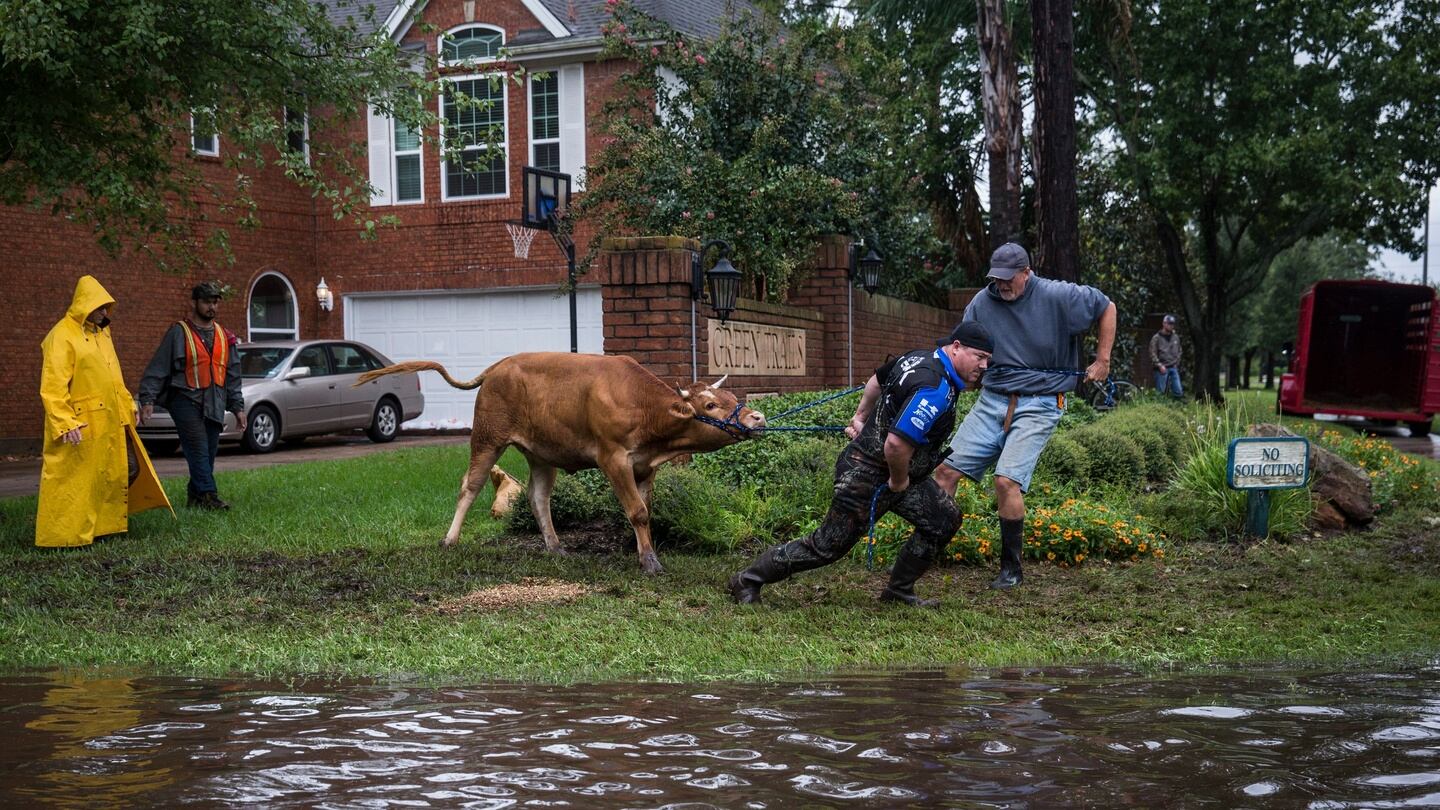The southern US states of Louisiana and Texas are braced for further rainfall after Tropical Storm Harvey made landfall about 322km west of New Orleans, flooding roads and houses and causing widespread damage across the region.
Five days after Hurricane Harvey made landfall on the coast of Texas, the storm once again reached the southern coast of the US. Despite being downgraded to a tropical storm, Harvey has continued to wreak havoc, with heavy rainfall continuing in parts of Texas and Louisiana.
While the sun shone in parts of Houston on Wednesday, bringing some reprieve to the city after it was flooded by Harvey, the eastern part of Texas remained badly affected, with cities including Beaumont and Port Arthur under water. Some shelters in the city of Port Arthur were flooded, after 2ft of water fell in 24 hours, spurring several rescue operations in the city.
0 of 6
Speaking at a press conference in Austin on Wednesday, Texas’s governor Greg Abbott warned that “the worst is not yet over for southeast Texas in terms of rainfall”, adding that major flooding will continue for a week in some regions of southeast Texas. He said that a total of 24,000 national guards were being deployed to Texas, amid what is the biggest storm to hit the state in 50 years.
Noting that the area hit by Tropical Storm Harvey was bigger than the area affected by Hurricanes Katrina and Sandy, Mr Abbott said he expected that federal funding for the region would exceed the resources given to states following those disasters. He later said the amount needed by the state would exceed the $125 billion (€105 billion) the US government allocated to aid Katrina relief.
As the storm moved eastwards, the National Weather Service warned that “catastrophic and life-threatening flooding will continue in and around Houston eastward into southwest Louisiana for the rest of the week”. It also said that the adverse weather event could push further north, causing flash-floods in areas like Kentucky.
Death toll
As much of Houston remained under water, authorities confirmed that the death toll from Harvey had now risen to 22, following the discovery of a submerged van in which six members of a Houston family, including four children, were believed to have died when their vehicle was swept off a bridge.
More than 30,000 people remain in shelters in the city, while at least 210,000 people in the region have applied for federal aid. It is believed that most of the homes affected by Harvey were not insured, leaving the federal government the main port of call for those seeking financial compensation, following the worst storm to hit the US since Hurricane Katrina 12 years ago.
Damage has been estimated at tens of billions of dollars, making it one of the costliest US natural disasters ever.
However, two reservoirs near Houston, the Addicks and Baker reservoirs, were now expected to remain functioning, despite earlier expectations that they could be overwhelmed by the flood waters.
“Catastrophic and life-threatening flooding continues in southeastern Texas and portions of southwestern Louisiana,” the National Hurricane Centre warned in an advisory on Wednesday. However, the centre said that the storm should slow to a tropical depression by Thursday as it moves further north and east.
The storm also caused the country’s largest oil refinery, Motiva, to stop operations due to severe flooding, joining dozens of other plants in the Texas area that have been forced to halt operations.
As the centre of the US’s oil and energy industry, Texas’s energy production has been badly hit by the storm. Gasoline prices rose to a two-year high on Wednesday, with expectations of steep rises for consumers.
Late on Tuesday, a nighttime curfew from 10pm to 5am was imposed in the city of Houston to prevent looting.
Meanwhile, in neighbouring Louisiana, New Orleans was expected to escape the kind of damage that ravaged the city in 2005 when Hurricane Katrina hit.
City officials reported good progress as workers rushed to fix its pump system, which failed earlier this month after heavy rain.
Additional reporting: PA and Reuters



















